Light and refreshing, Zaru Soba (Cold Soba Noodles) is the ultimate ten-minute summer meal. Slippery buckwheat noodles cool you down fast, and the briny soy-dashi dipping sauce makes every bite bright and savory.
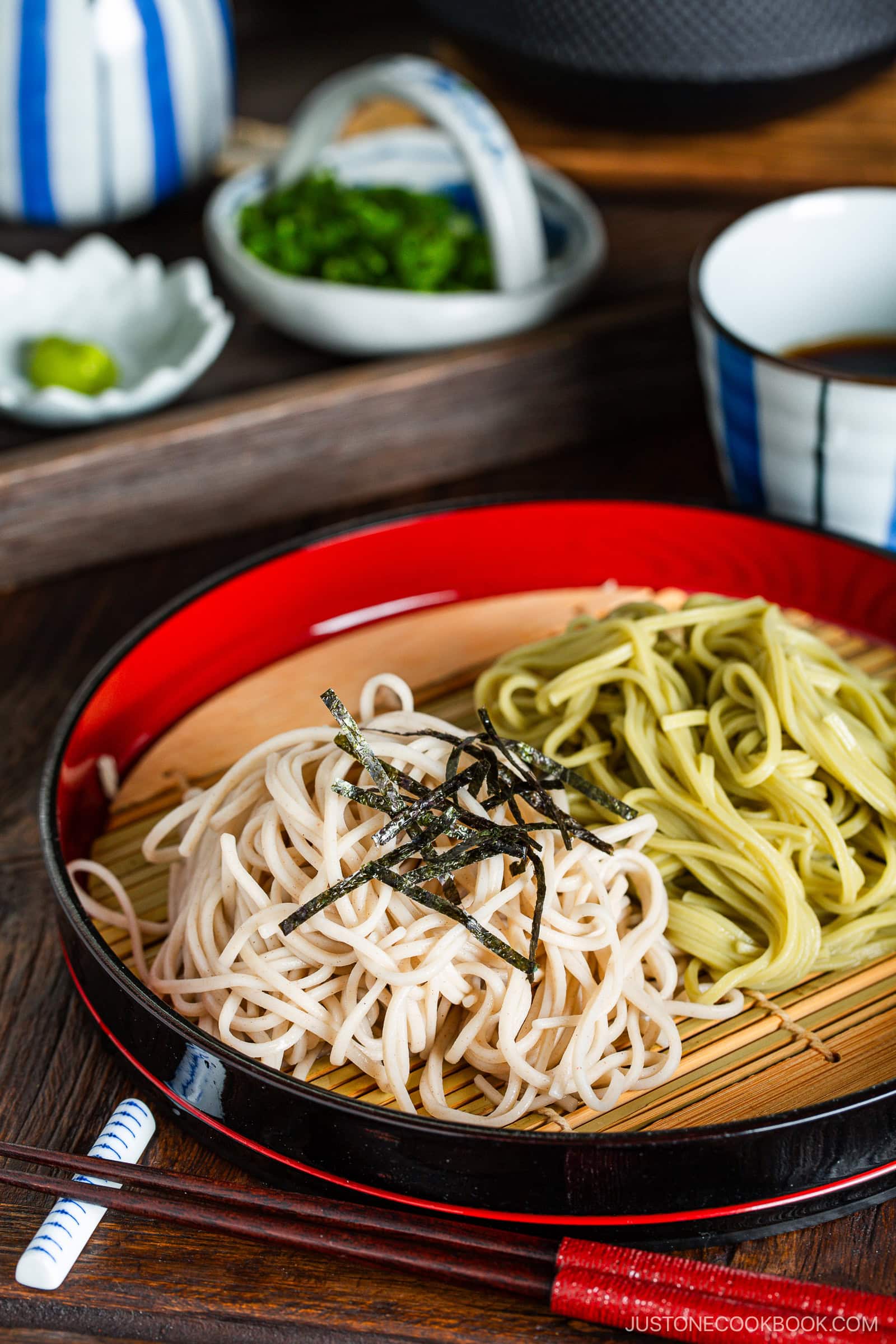
Zaru Soba (Cold Soba Noodles) is my family’s go-to when the heat and humidity soar. Tender, chilled noodles rest on a bamboo mat, ready for a quick dip in icy mentsuyu so you can slurp them up cold. I’ll show you how to make the speedy homemade sauce, cook the noodles so they stay chewy, and serve them with classic toppings—all using pantry staples you probably have on hand.
If you love chilled noodle dishes, try my Soba Noodle Salad, Hiyashi Chuka, and Japanese Cold Somen Noodles recipes next!
Table of Contents
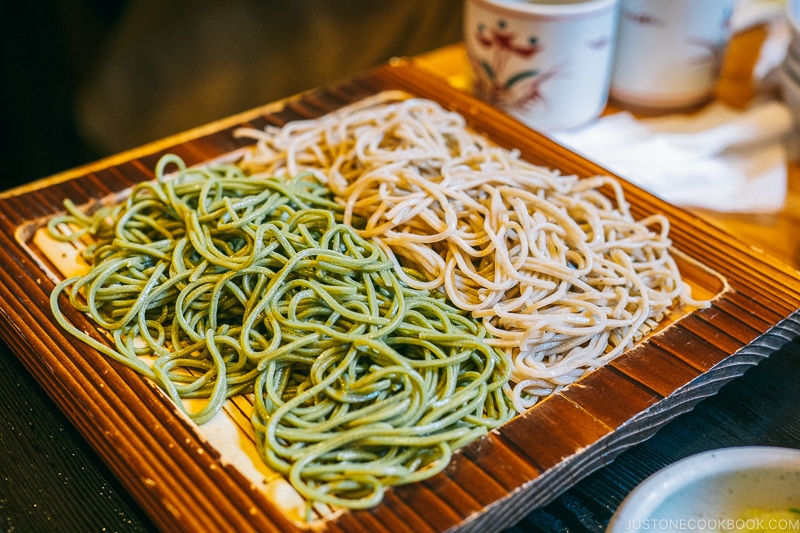
What is Zaru Soba (Cold Soba Noodles)?
Zaru soba (ざる蕎麦) is Japan’s classic chilled buckwheat noodle dish, first enjoyed during the Edo period (1603–1868). Its name comes from the zaru, a bamboo strainer that keeps the ice-cold noodles lifted so excess water can drain away. Diners quickly dip the noodles in a savory sauce called tsuyu, brightening each bite with toppings like green onion and fresh wasabi. Zaru Soba is beloved as a quick, cool way to beat the summer heat.
Why I Love This Recipe
- Quick 10-minute summer meal
- Cools you down fast
- Uses common Japanese pantry ingredients
Ingredients for Zaru Soba (Cold Soba Noodles)
- Dried soba noodles
- Homemade mentsuyu (noodle soup base) – for the dipping sauce; or use bottled
- Sake
- Soy sauce
- Mirin
- Kombu (dried kelp)
- Katsuobushi (dried bonito flakes)
- Shredded nori seaweed (kizami nori)
- Green onions/scallions
- Iced water
- Wasabi (optional)
Find the printable recipe with measurements below.
Jump to RecipeSubstitutions
- Soba noodles: It’s up to you what type you use. Ju-wari soba (十割そば) is made of 100% buckwheat flour; it has a strong aroma and flavor and is more dry and crumbly. Hachi-wari soba (八割そば) is made from 80% buckwheat flour and 20% wheat flour; it’s smoother and has an al dente texture.
- Mentsuyu: Follow my instructions to make the homemade version or buy convenient bottled mentsuyu from a Japanese or Asian grocery store.
- Sake: Substitute dry sherry or Chinese rice wine, or use water.
- Mirin: If you don’t have it, try using 3 parts sake (or water) to 1 part sugar. The flavor isn’t the same, but it’s close.
- Soy sauce: Use tamari soy sauce for gluten-free.
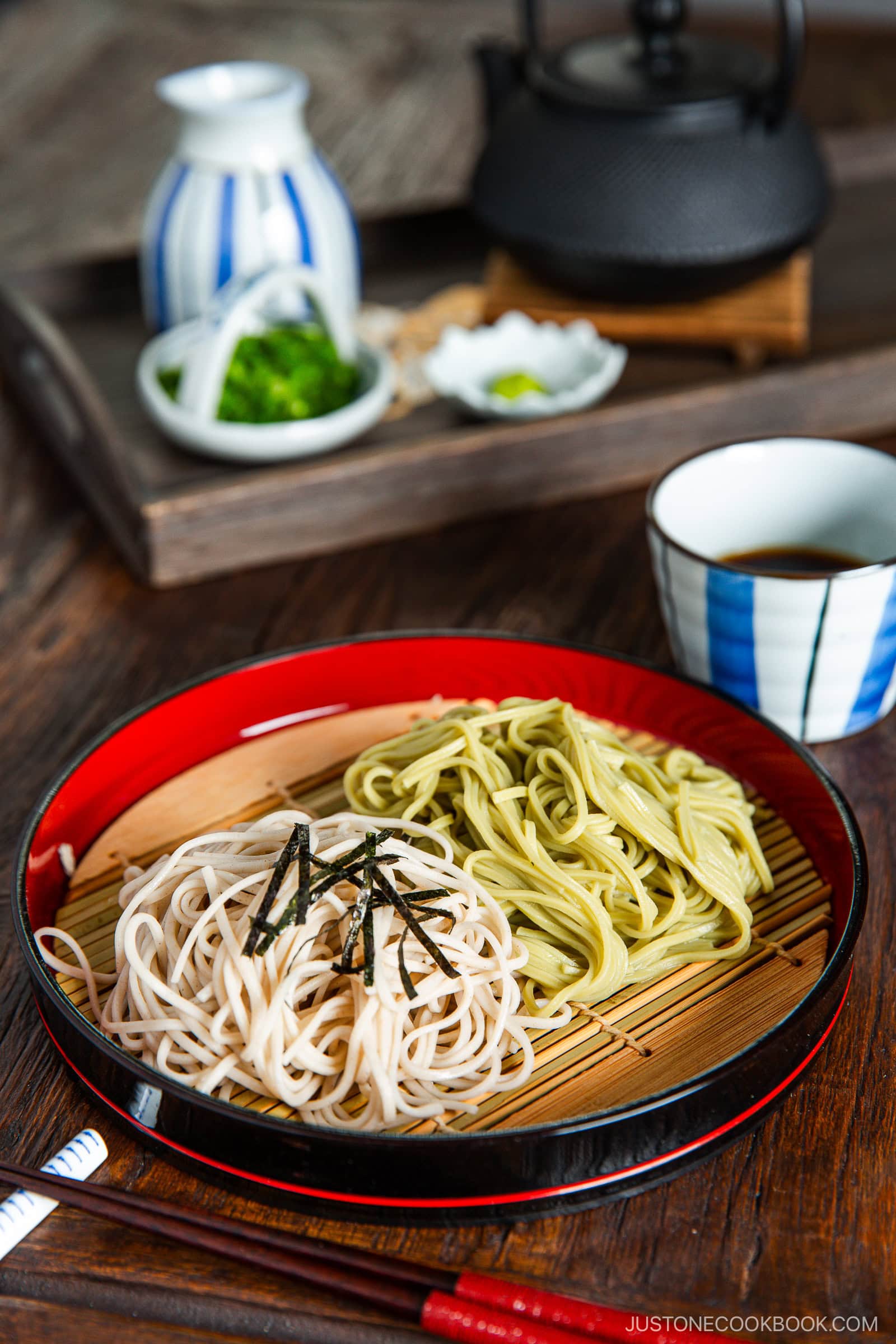
How to Make Zaru Soba (Cold Soba Noodles)
Preparation
- Simmer the sauce. Boil sake to cook off the alcohol, then add soy sauce, mirin, kombu, and katsuobushi. Simmer for 5 minutes, let cool, strain, and refrigerate.
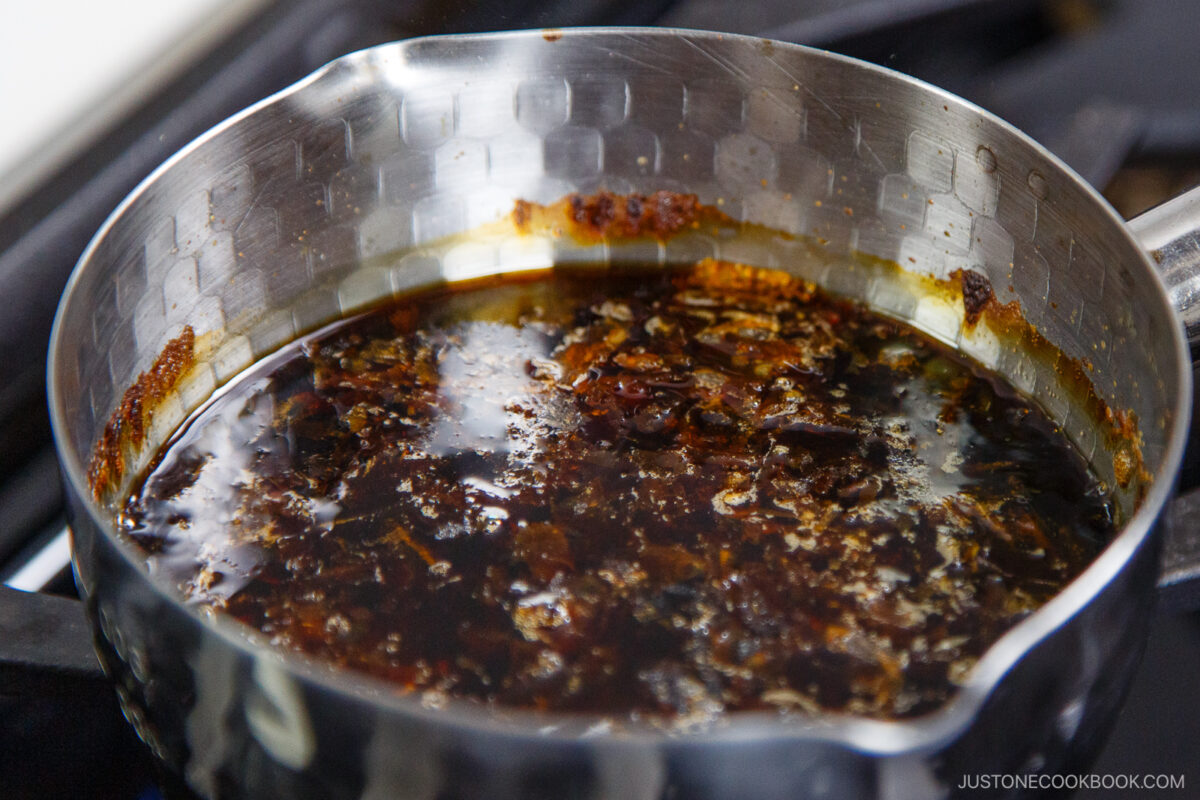
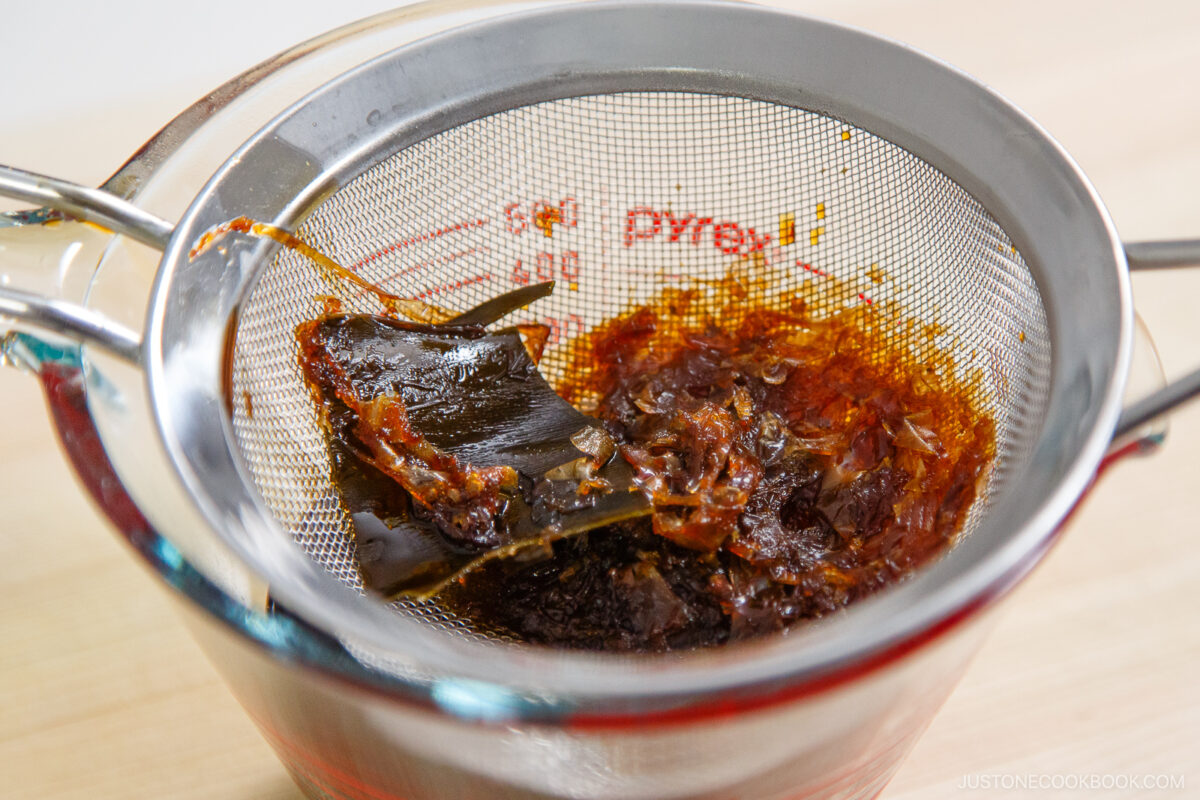
Cooking
- Boil and chill the noodles. Boil a large pot of unsalted water and fan in the soba noodles. Cook according to the package directions until just tender. Scoop out 1 cup of the cooking water (sobayu) and set aside for the end of the meal. Drain the noodles in a colander and rinse under cold water, gently rubbing off the starch. Then chill in an ice bath for 30 seconds and drain well.
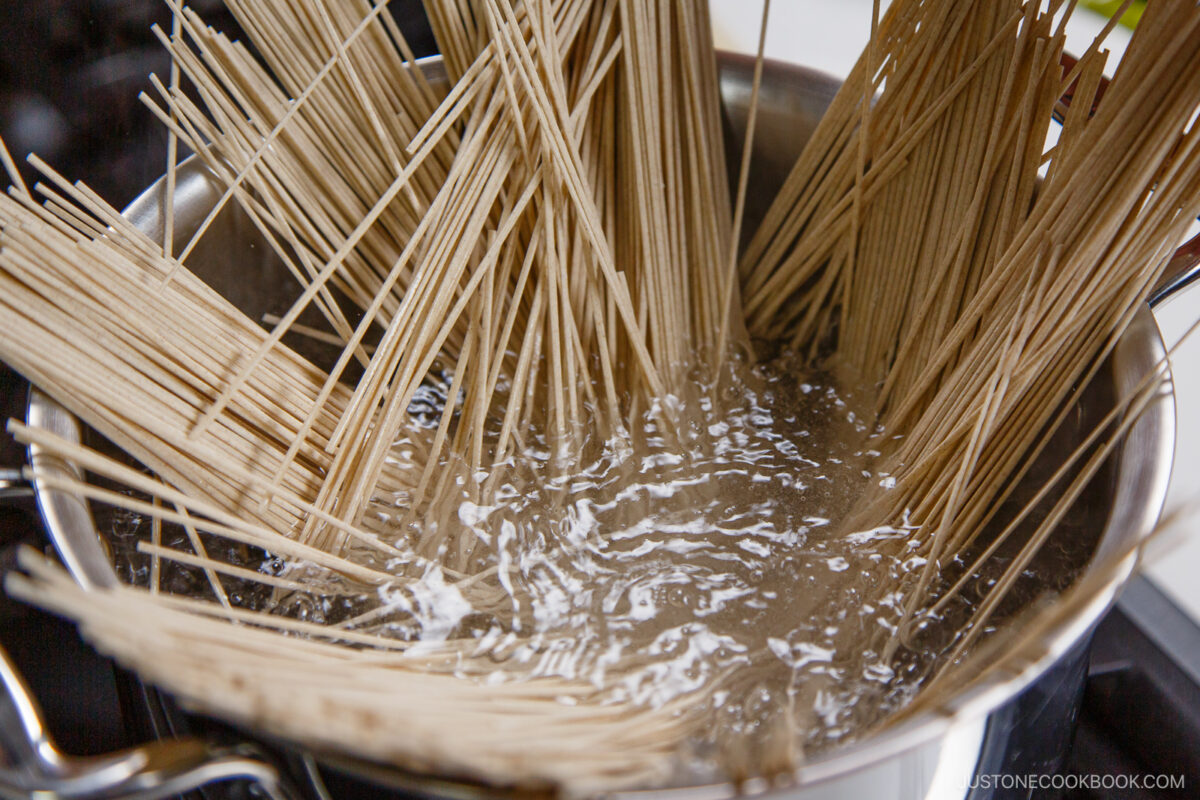
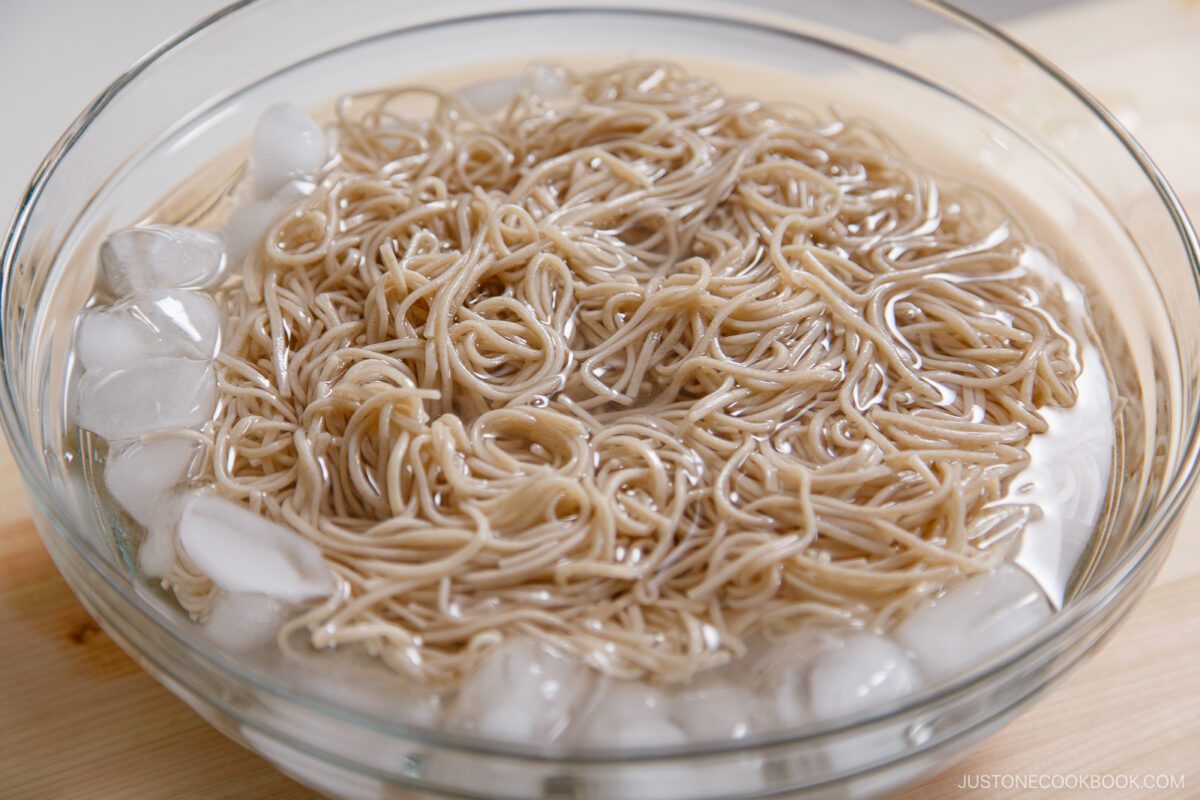
Assemble
- Plate. Mound one serving of noodles onto each bamboo mat. Sprinkle with shredded nori. Cut the green onion and put it on a small dish.
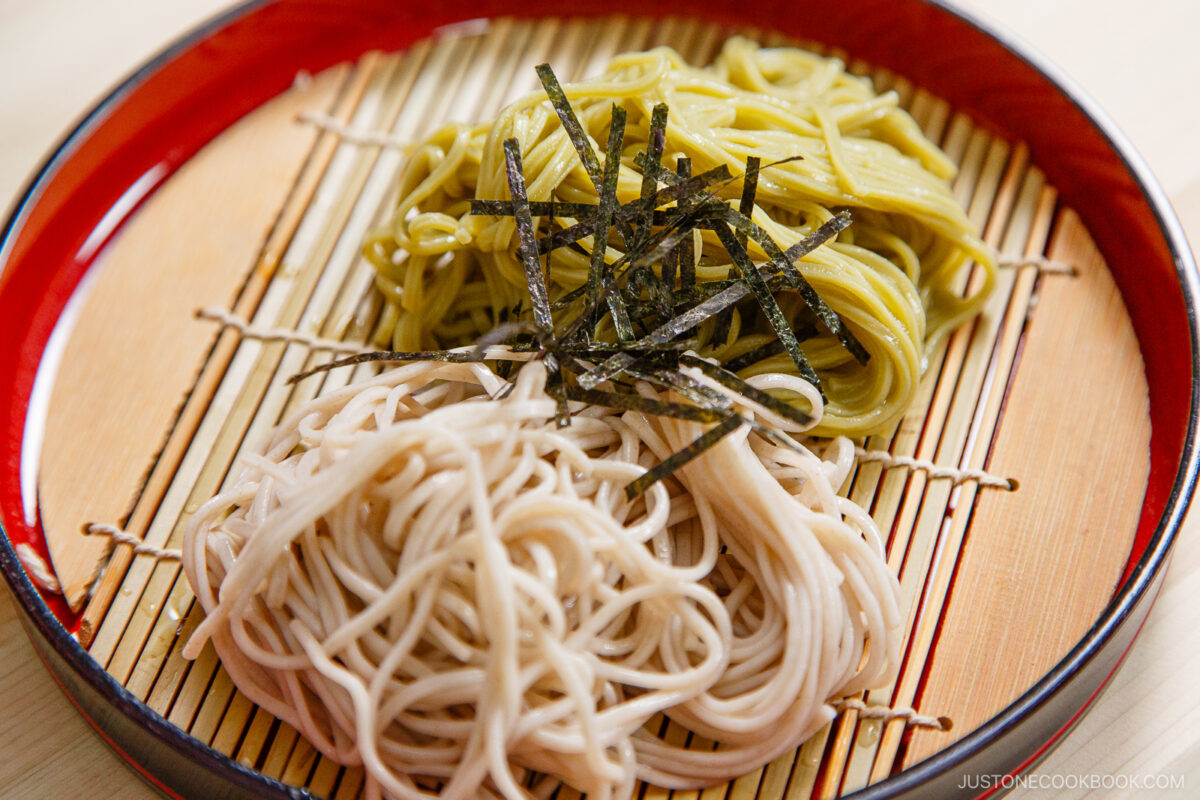
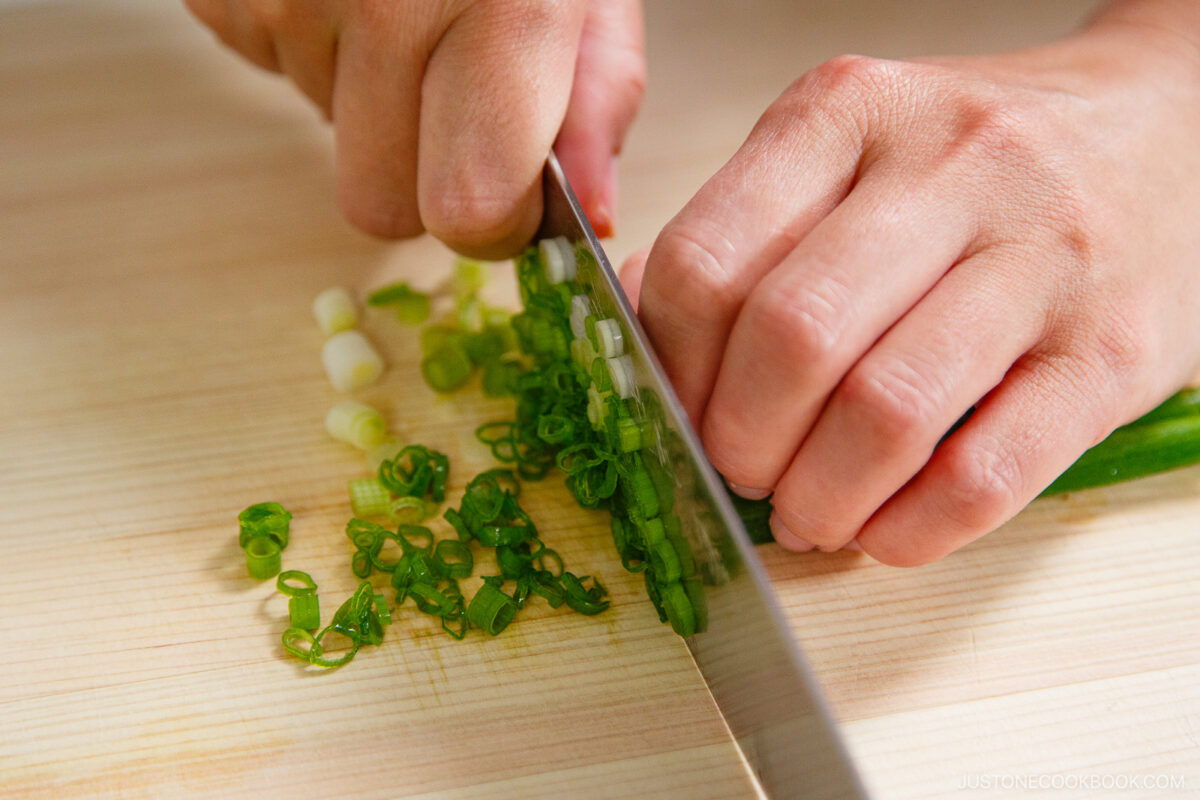
- Mix the sauce and serve. Dilute concentrated mentsuyu with iced water in the serving pitcher, and pour into individual dipping cups.
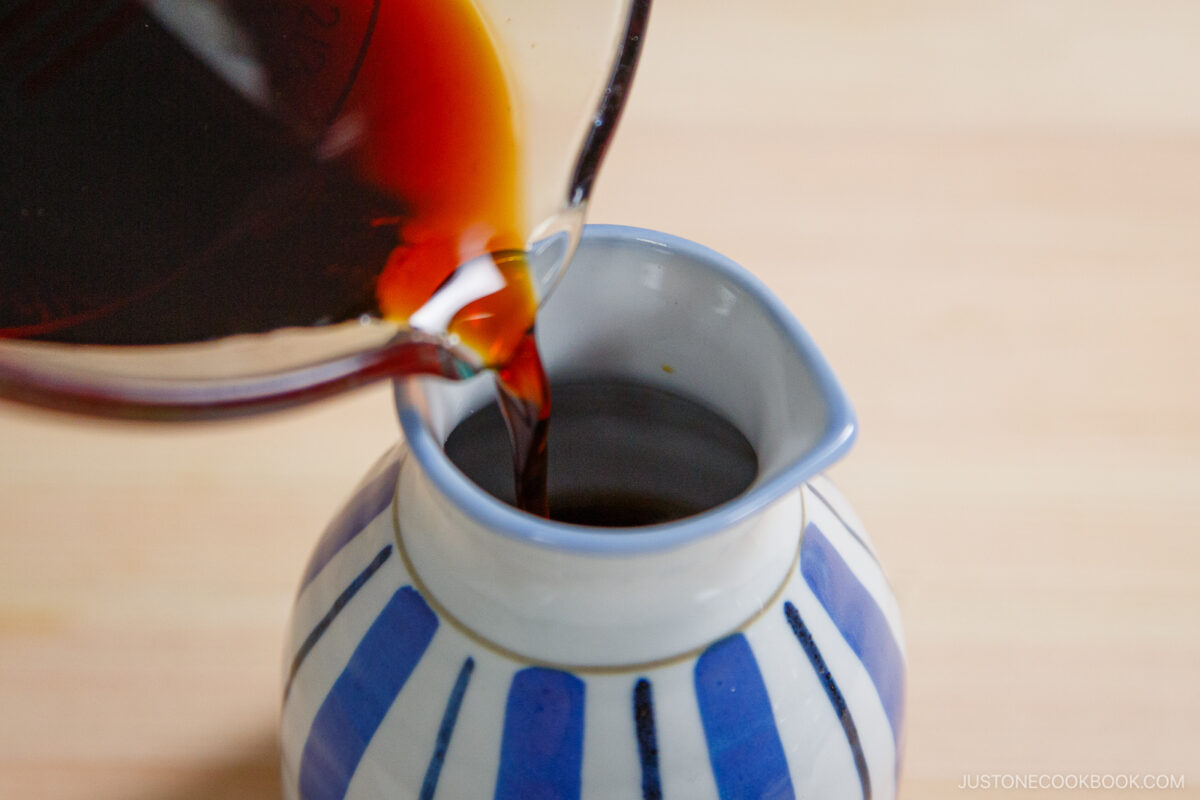
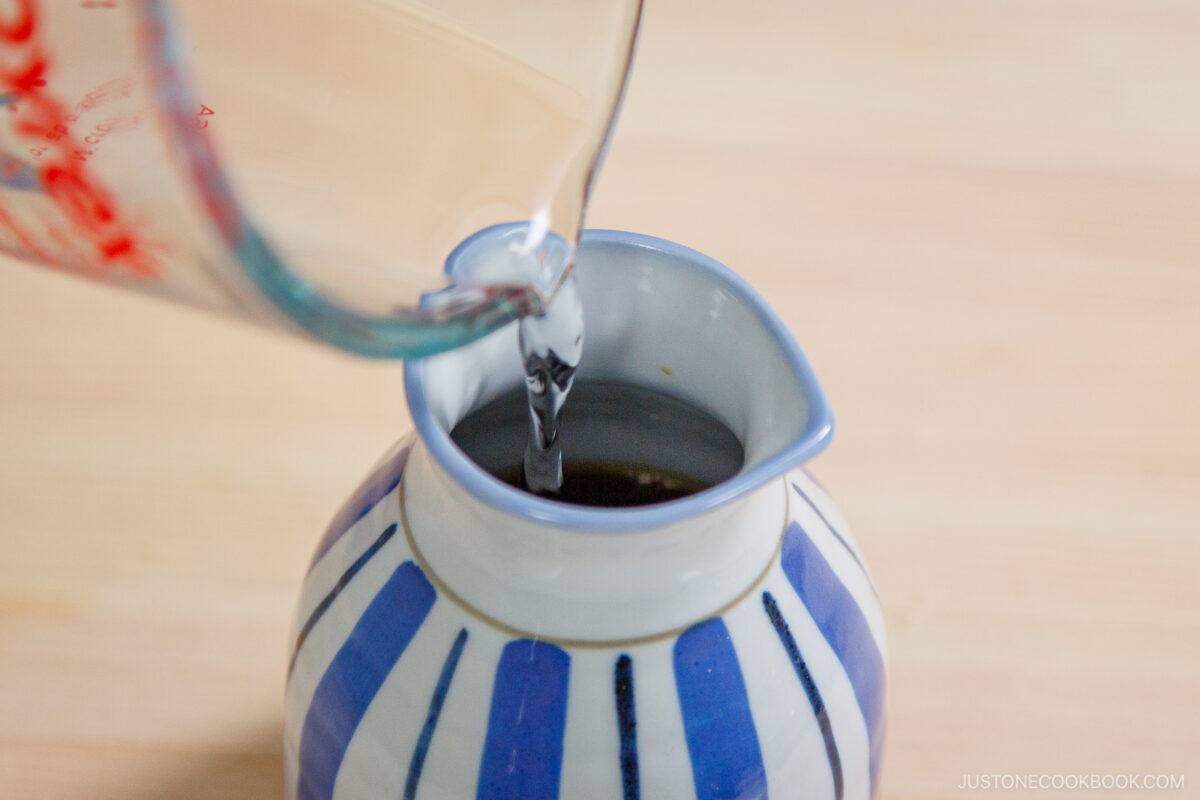
- Serve and enjoy. Add your condiments to the dipping cup, then dip the soba noodles, and slurp. Finish by stirring hot sobayu into the remaining sauce and drinking it like tea. Finish by stirring hot sobayu into the remaining sauce and drinking it like tea.
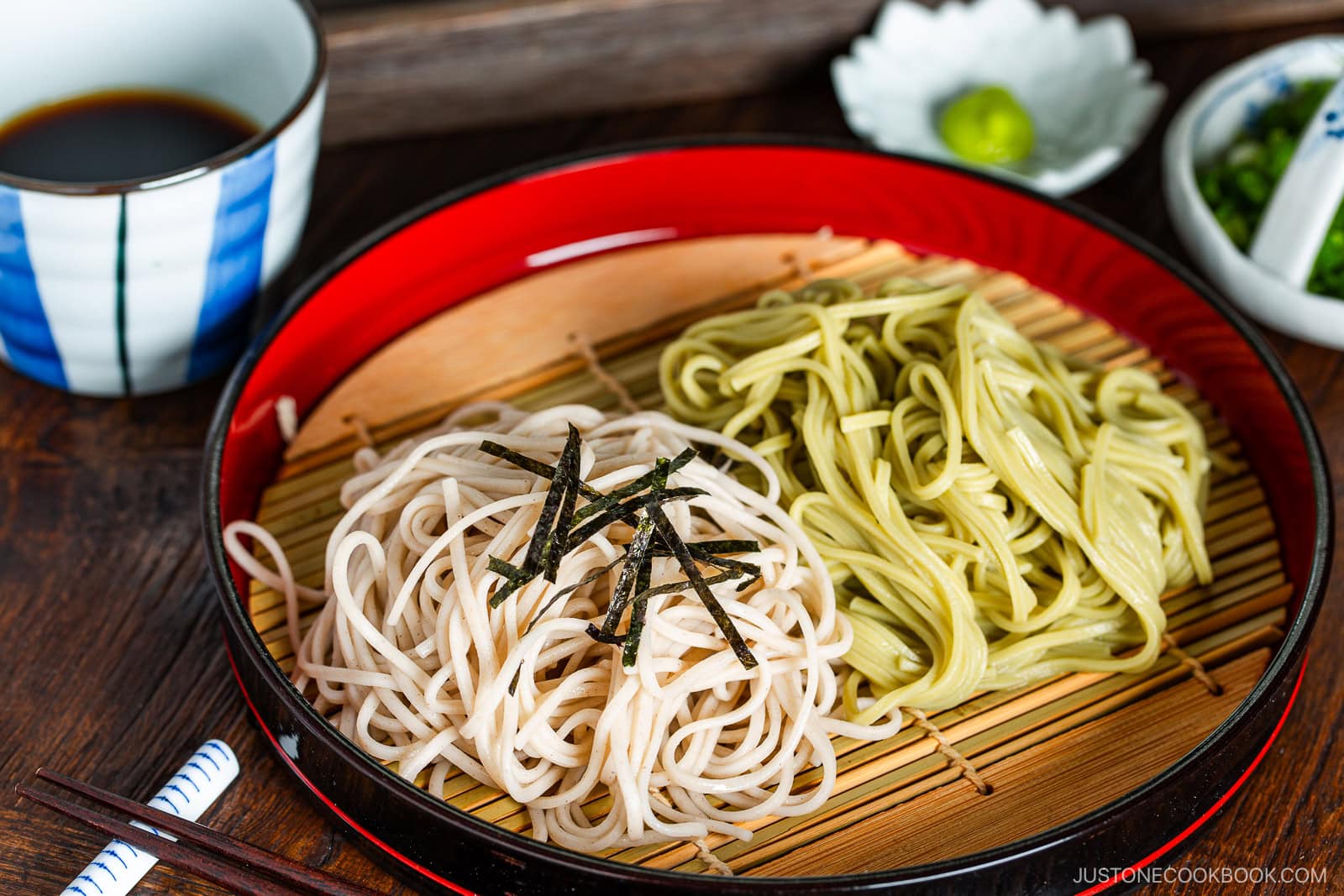
Nami’s Recipe Tips
- Use plenty of water. Soba releases starch quickly. A big pot prevents the water temperature from dropping and keeps strands from sticking.
- Separate the noodles. Fan them out and give a quick stir so they cook evenly.
- Rinse thoroughly. Cold running water removes the layer of starch that would otherwise make noodles gummy.
- Shock for chew. A 30-second ice bath firms the texture and locks in that satisfying bite.
- Save and enjoy sobayu. The starchy water contains dissolved buckwheat nutrients. Mixing it with leftover tsuyu creates a light, nourishing broth to end the meal.
- Batch your sauce. Mentsuyu keeps for a month in the fridge, so make extra and you’ll always have dipping sauce ready for spontaneous noodle nights.
Variations and Customizations
- Serve other condiments. Try adding grated daikon, sesame seeds, or grated ginger to your dipping sauce.
- Try different noodle flavors. Serve it with green tea soba (cha soba, 茶そば) flavored with matcha powder for a subtle taste and green tint. You can also try soft-pink ume plum soba (ume soba, 梅そば) flavored with Japanese ume plum.
- Make Oroshi Soba. Serve your chilled soba in a bowl with dashi-based sauce and garnish with grated daikon, dried bonito flakes, and tempura scraps.
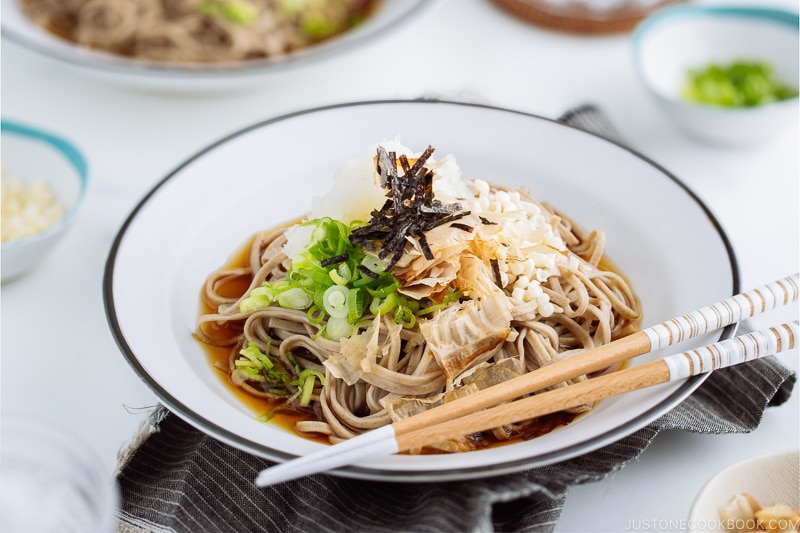
What to Serve with Zaru Soba (Cold Soba Noodles)
Make these cold buckwheat noodles into a more substantial meal with these Japanese dishes:
- Add Vegetable Tempura or Shrimp Tempura for tenzaru (天ざる), the perfect dish and a classic summer combo served across Japan.
- Tofu Salad with Sesame Ponzu Dressing with leafy greens, corn, and wakame seaweed.
- Simmered Shiitake Mushrooms (Fukumeni)
- Namasu (Dailon and Carrot Salad)
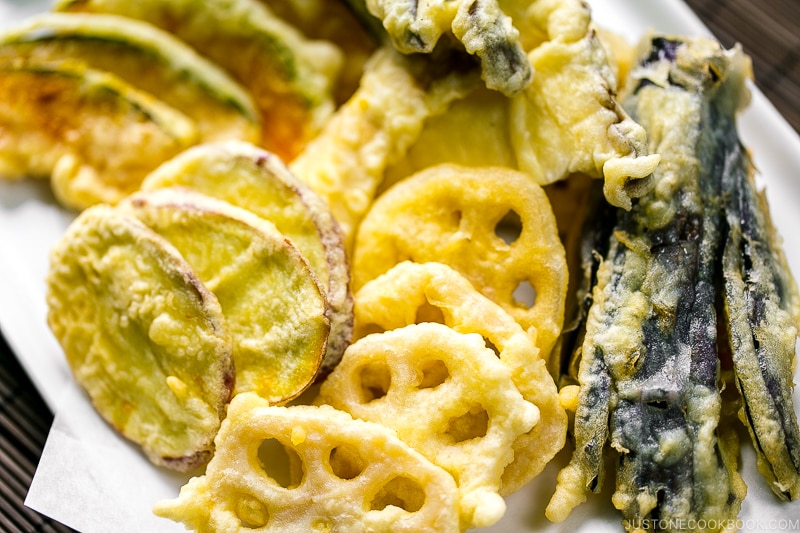
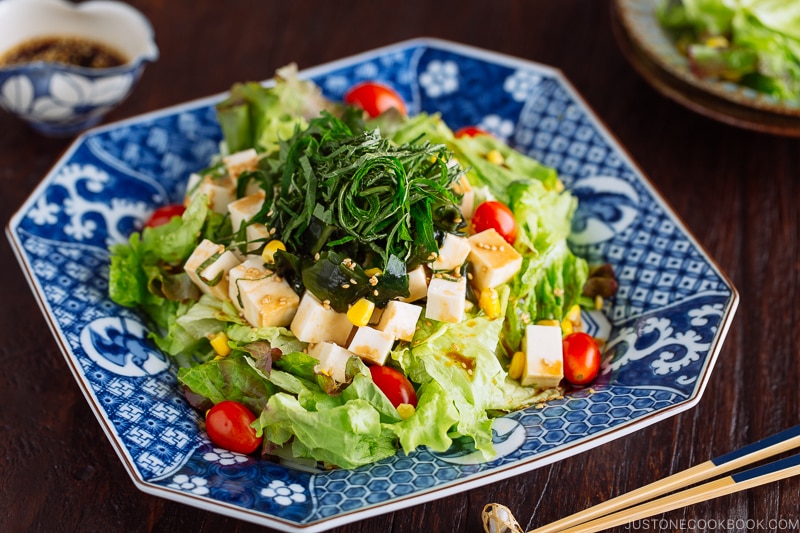
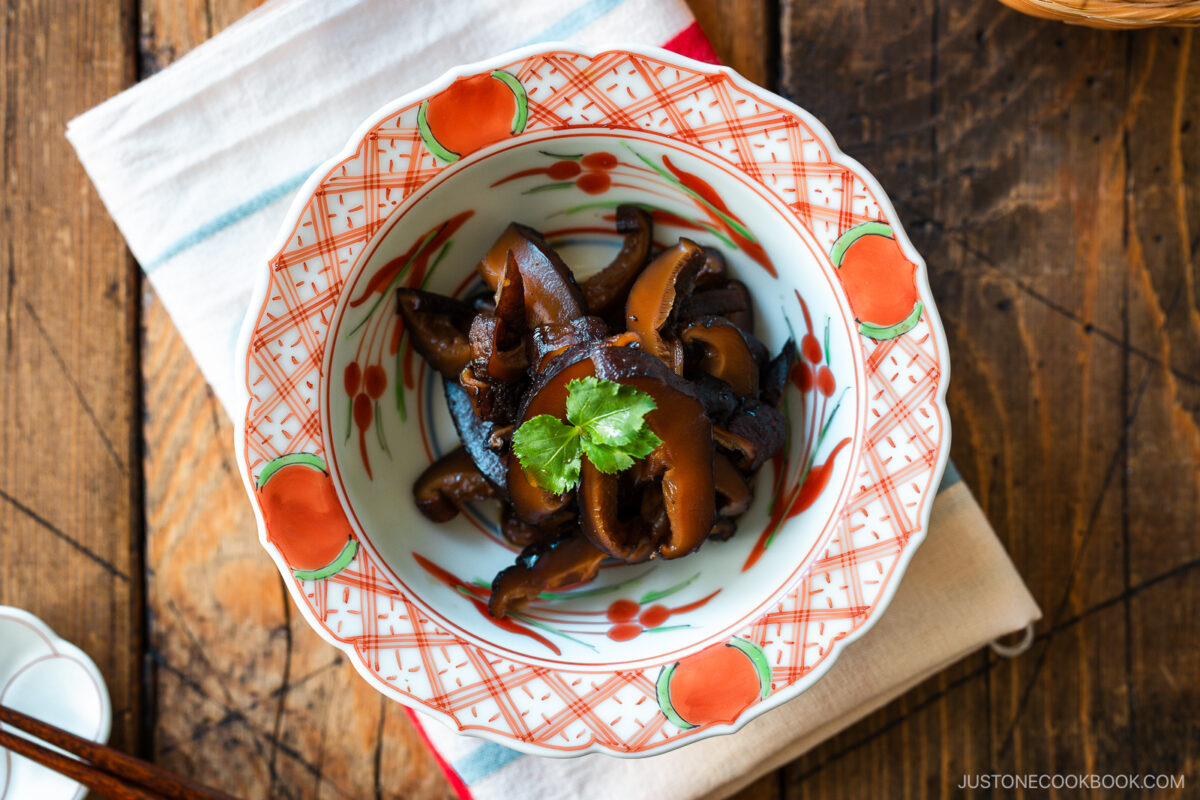
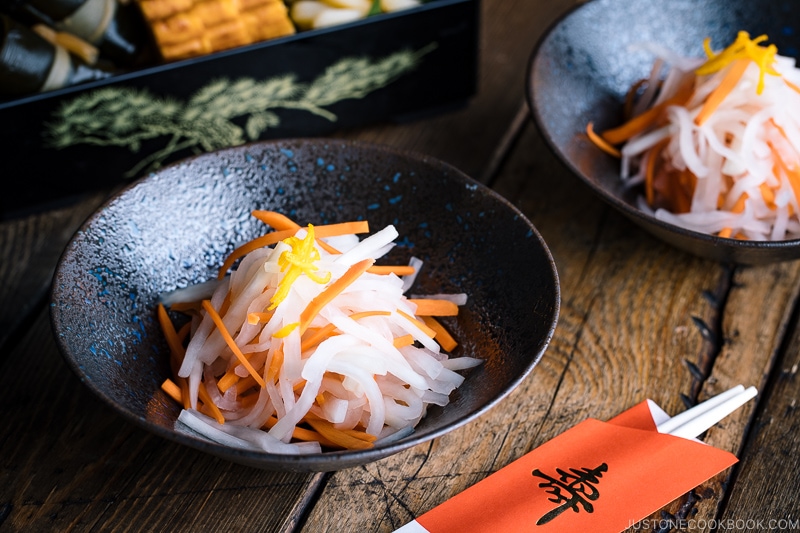
Storage Tips
To store: Store any leftover homemade mentsuyu in a clean, airtight container in the refrigerator for up to a month. I recommend cooking the soba noodles just before serving.
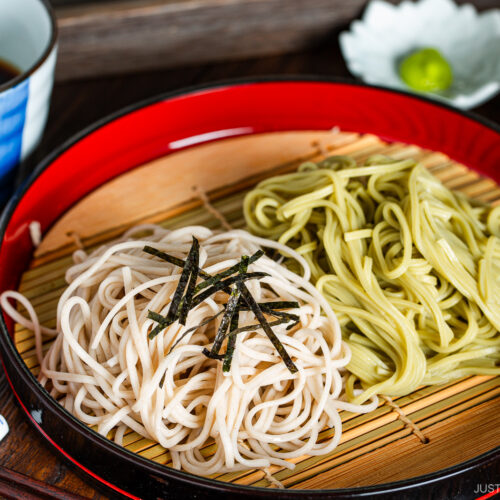
Zaru Soba (Cold Soba Noodles)
Video
Ingredients
For the Homemade Mentsuyu (Concentrated Noodle Soup Base)
- ¼ cup sake
- ½ cup soy sauce
- ½ cup mirin (plus 1 Tbsp, to taste)
- 1 piece kombu (dried kelp) (1 x 1 inch, 2.5 x 2.5 cm per piece)
- ½–1 cup katsuobushi (dried bonito flakes) (packed; if you like a more intense flavor, use the larger amount)
For the Zaru Soba
- 14 oz dried soba noodles (buckwheat noodles) (3.5 oz, 100 g per serving)
- shredded nori seaweed (kizami nori)
- 6 Tbsp mentsuyu (concentrated noodle soup base)
- 1⅛ cups iced water
For the Garnish
- 2 green onions/scallions
- wasabi (optional)
Instructions
- Before You Start: In this recipe, I show you how to make homemade concentrated noodle soup base called mentsuyu. I usually make it ahead of time and keep it in the fridge to use in noodle recipes. If you don't have time to make it, you can use a bottle of store-bought mentsuyu available at Japanese or Asian grocery stores. Now, gather all the ingredients.

To Make the Homemade Mentsuyu
- Add ¼ cup sake and ½ cup mirin to a medium saucepan. Bring it to a boil over medium-high heat and let the alcohol evaporate for a few seconds. Then, add ½ cup soy sauce . Nami's tip: I usually add an extra 1 Tbsp mirin for my family‘s preference.
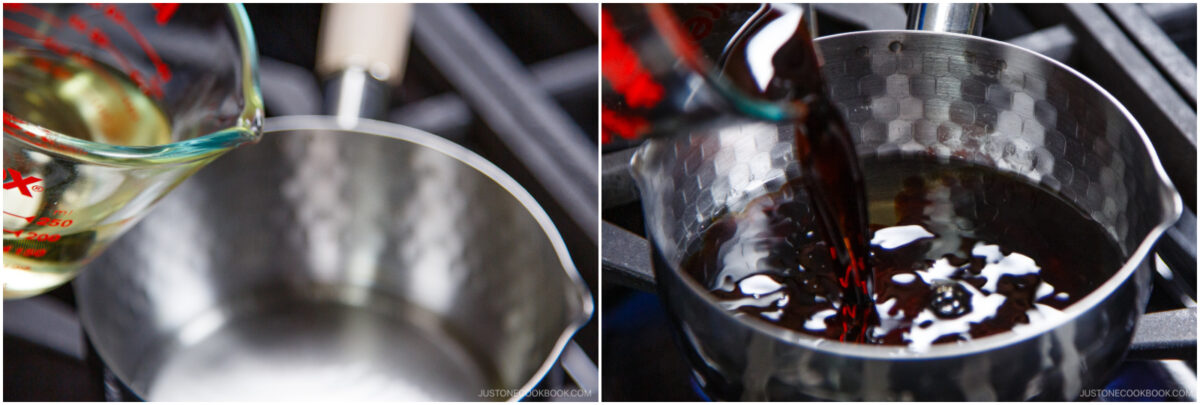
- Add 1 piece kombu (dried kelp) and ½–1 cup katsuobushi (dried bonito flakes). Use the maximum amount of katsuobushi for more intense bonito flavor.
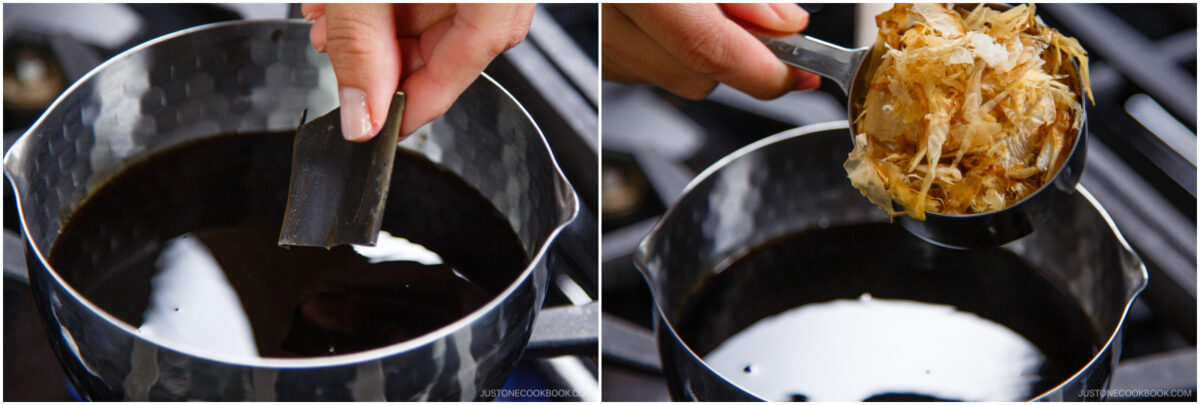
- Bring it to a boil and simmer on low heat for 5 minutes. Turn off the heat. Let it steep and cool completely. Strain the mentsuyu and set aside. Nami's tip: You can keep this concentrated soup base in an airtight container and store it in the refrigerator for up to a month.
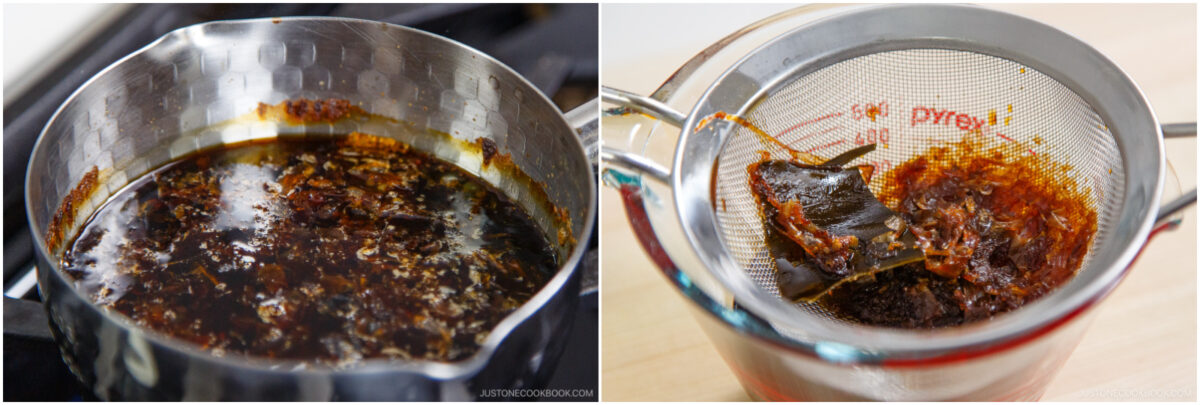
To Boil the Soba Noodles
- Boil a lot of water in a large pot. Unlike pasta, you do not add salt to the cooking water. Add 14 oz dried soba noodles (buckwheat noodles) to the boiling water, distributing them around the pot in a circular pattern to separate the noodles from each other. Cook the noodles according to the package instructions. Stir occasionally so they don’t stick to each other. The noodles are done when just tender; do not overcook. Reserve 1–1½ cups of the cooking water called sobayu and set aside to enjoy at the end of the meal.
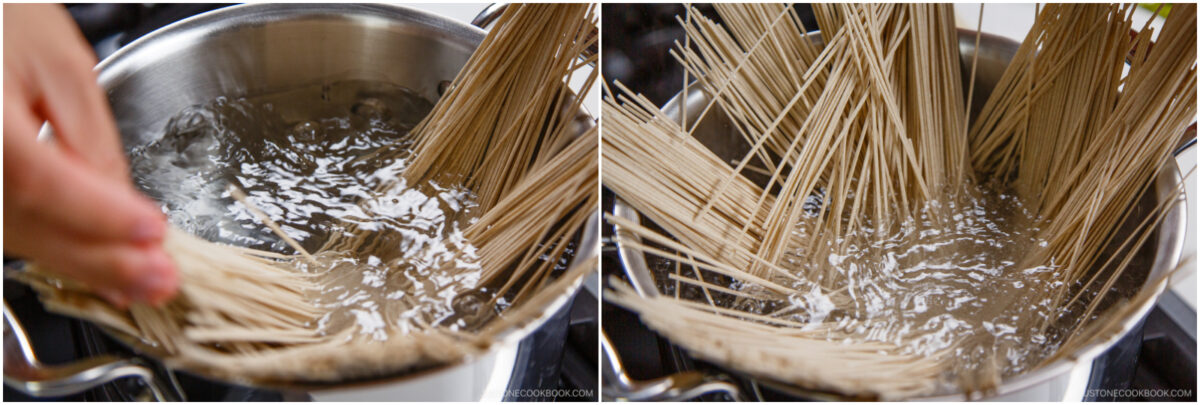
- Drain the soba in a sieve and rinse them under cold running water with your hands to get rid of the excess starch. This is a very important step to keep the noodles from sticking to each other.
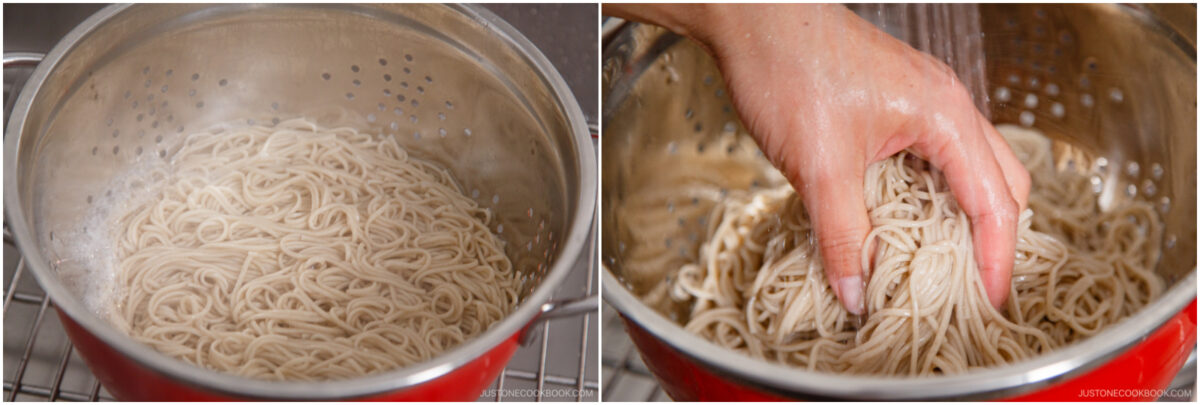
- Shake the sieve to drain the water completely. Then, transfer the noodles to a large bowl of iced water. Chill the noodles for 30 seconds, drain well, and set aside.
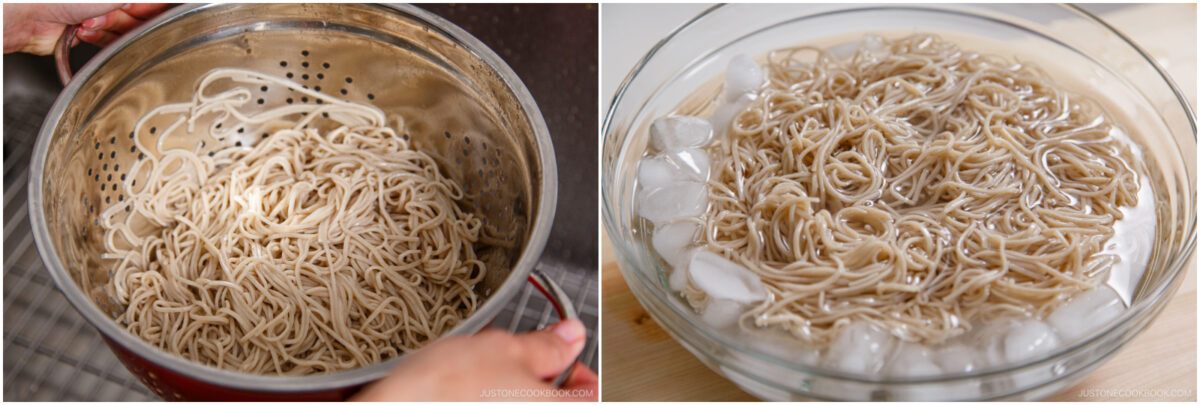
To Serve
- Place bamboo sieves or mats over individual plates (to catch the draining water from the noodles). Place one serving of soba noodles on each mat and garnish with shredded nori seaweed (kizami nori) on top.
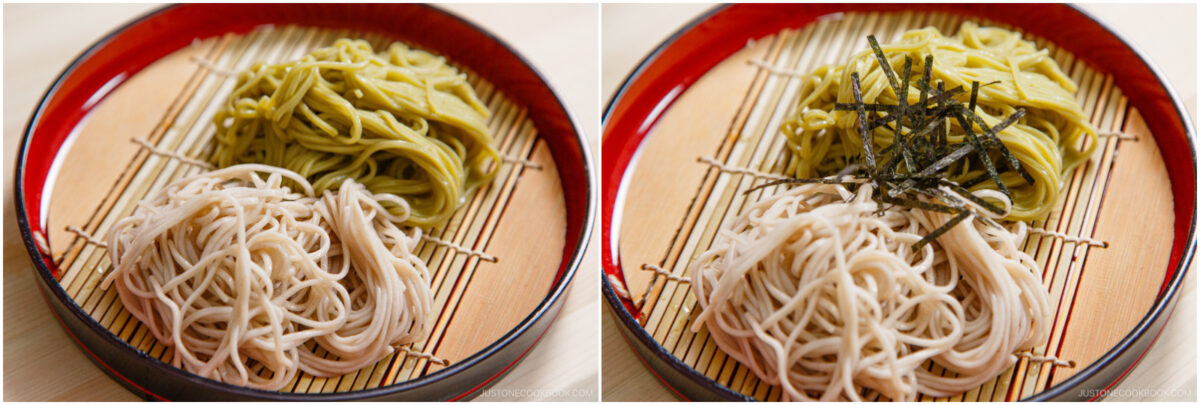
- Prepare the soba dipping sauce using a 1-to-3 ratio of homemade mentsuyu to water. Combine 6 Tbsp mentsuyu (concentrated noodle soup base) and 1⅛ cups iced water in a measuring cup and check the taste. If it‘s salty, add more water, and if it‘s too dilute, add more mentsuyu. Divide the dipping sauce into individual cups.
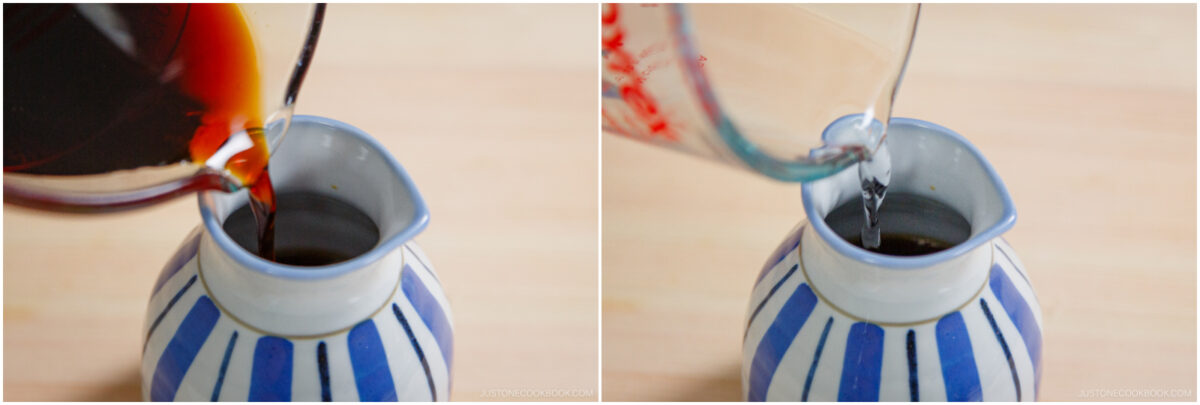
- Chop 2 green onions/scallions and put on individual small plates. Add a bit of wasabi to the plates. Serve with the soba noodles and individual cups of dipping sauce. When you’re done with the noodles, pour the reserved soba cooking water (sobayu) into the rest of the sauce in your dipping cup and enjoy it as a soup broth.
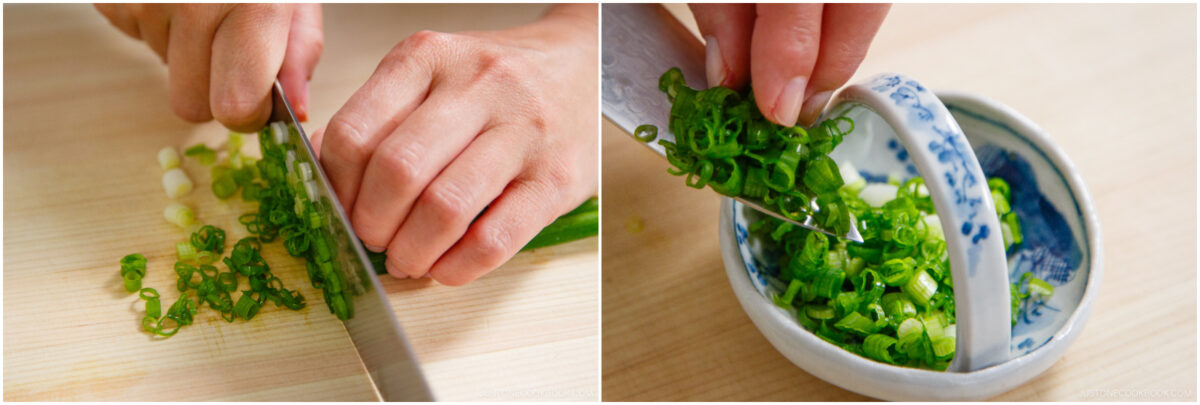
- For a more substantial meal, enjoy this Zaru Soba with a variety of vegetables like mushrooms, carrots, daikon radish, and lettuce/cabbage-based salads. It‘s also common to serve zaru soba with tempura, called tenzaru (天ざる). Try it with Vegetable Tempura and Shrimp Tempura.
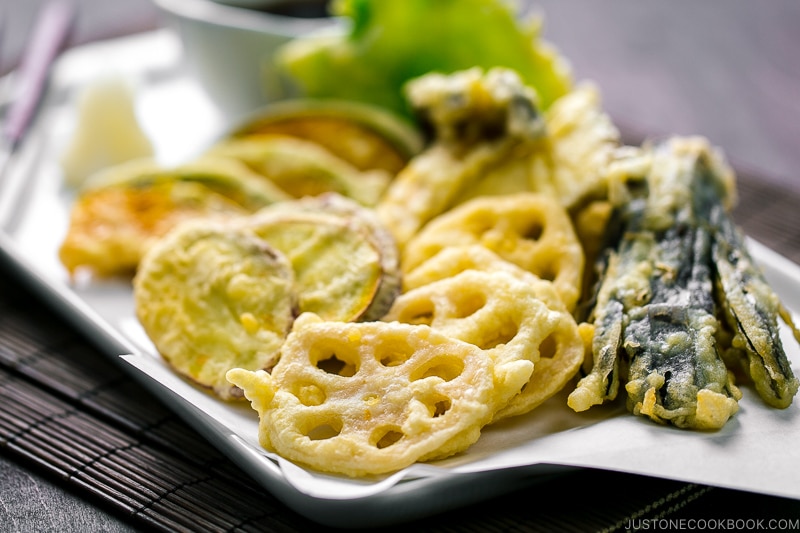
To Store
- Store any leftover homemade mentsuyu in a clean, airtight container in the refrigerator for up to a month. I recommend cooking the soba noodles just before serving.
Nutrition
Editor’s Note: The post was originally published in August 2011. It’s been updated with new images and the video in July 2016. The post has been republished with more helpful content on June 26, 2025.
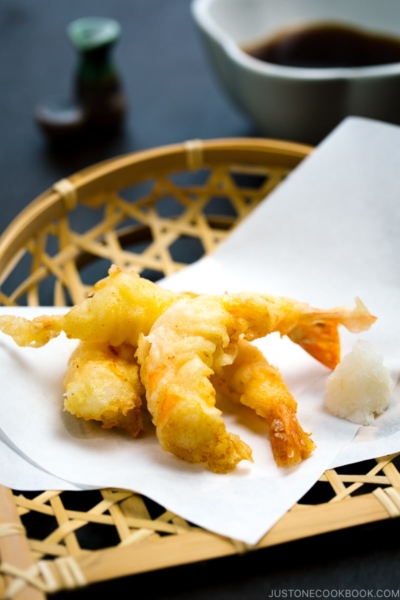
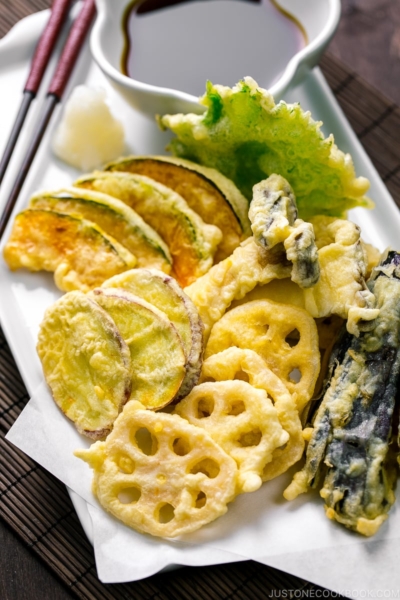
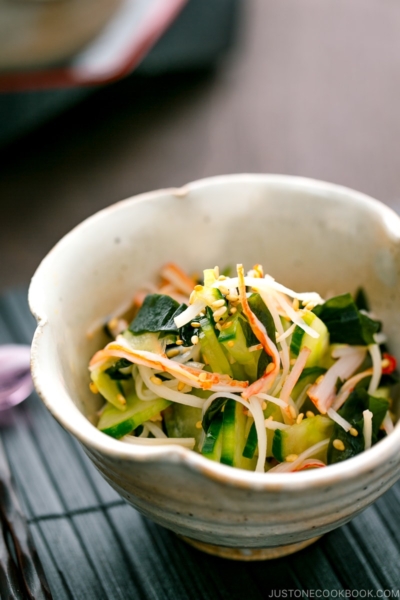
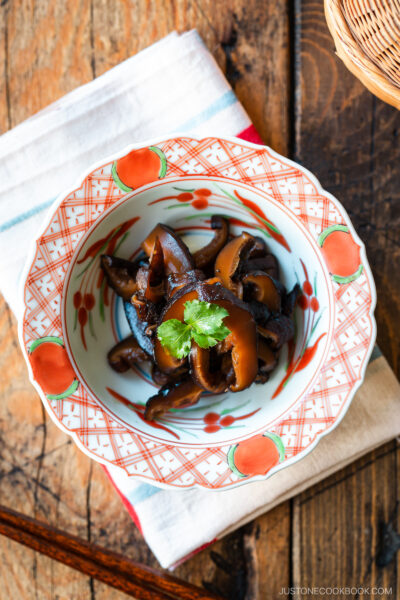




I always wondered about how my Mother made this.
Now I know. Thank you, Nami.
Hello Kumiko, Aww, thank you so much for your kind feedback! It truly means a lot to Nami.
We hope you’ll find many dishes on our site that help you recreate your mother’s cooking and bring back those special memories.☺️
Happy cooking!
In a pinch, can i use hondashi instead of the seaweed+bonito. If so, what would be the ratio? Usually it’s 1 tsp to 8oz water for dashi stock, I think.
Hi Helen, Thank you so much for reading Nami’s post!
Yes, it’s possible to make dipping sauce using Hondashi, although we haven’t personally tested it yet. The 1 teaspoon to 8 oz ratio is great for making basic dashi, but for dipping sauce, you might want to make it a bit stronger.
Also, you may want to slightly reduce the soy sauce in the recipe to keep the flavor nicely balanced. Hope this helps, and happy cooking!
This looks so delicious and refreshing! I have done cold soba and other noodles before and it is so yummy. We are in the middle of a brutal heat wave here so I will be doing again, Question: is there a kind of dried bonito flake that isn’t smoked please? As a migraineur I cannot eat smoked foods, since it is a known trigger for migraines. Thank you
Hello, Claire. Thank you for reading Nami’s post.
We have not heard of non-smoked Katsuobushi. The smoking procedure is the most crucial step in making Katsuobushi. How about using dried shiitake mushrooms? It will also provide excellent umami.🙂
Love the recipe but Hakubaku soba contains wheat which is an allergen for me. Do you know any wheat-free brands available in the US? I enjoy soba in Japan every year!
Hello, Cindy! We completely understand your concern about gluten in soba noodles.
While traditional soba is made from 100% buckwheat, which is naturally gluten-free, many store-bought versions include wheat flour. So it’s always a good idea to double-check the ingredients list.
Here’s a link to a 100% buckwheat soba noodle option that may work well for you. 😊
https://amzn.to/45Npauh
I just made this tonight (even though it’s winter) because I was craving cold soba which I tried on our first trip to Japan a few months ago. The dipping sauce was delicious, just as I remember from Japan. Thank you for sharing!
Hello Linda! Thank you for trying Nami’s recipe! We’re glad you enjoyed it. 🤗
Hi Nami, can I replace the bonito flakes with dashi stock? If not, what would be a good substitute?
Hello, Kayla. Thank you very much for trying Nami’s recipe.
You can replace 2-3 Shiitake mushrooms with Katsuobushi. If you use dashi stock instead, the Sake amount may need to be adjusted because it will be too watery.
We hope this helped! 🤗
It’s getting warmer in the mid-atlantic area. Ready to make this tomorrow!
Hi Kevin! Thank you so much for reading Nami’s post and trying her recipe!
hi, what can I do with the soba noodles leftovers?
thank you!
Hello, Francesco! Thank you so much for taking the time to read Nami’s post and try her recipe!
Leftovers can be stored in an airtight container in the refrigerator for a few days. If you wish to loosen the noodle the next day, rinse it with cold water.
We hope this was helpful!😊
Hot day? Cold noodles. Refreshing!
Hello, John! Thank you for being an inspiration to us! 😊
Any other protein suggestions to eat with the zaru soba? Tempura is just a little difficult to make at home…
TIA!
Hi Samantha! Thank you for reading Nami’s post and trying her recipe!
Zaru Soba is typically served simply just noodles or with Tempura, but with warm soba noodles, we served it with chicken, beef, or fish with soup.
How about serving the cold Soba (Zaru Soba) with your favorite proteins? It can be baked or pan-fried. You can also add cooked Edamame or Natto.
https://www.justonecookbook.com/grilled-mackerel-saba-shioyaki/
https://www.justonecookbook.com/simmered-beef-with-ginger-shigureni/
https://www.justonecookbook.com/yakitori/
https://www.justonecookbook.com/edamame/
https://www.justonecookbook.com/natto/
We hope this helps!
Zaru cha soba is also delicious if you make a maple & grated ginger sauce with garlic and sesame oil and eat it with sauté-ed mushrooms and bell peppers!
Hi DarkSunMoon, Thank you very much for reading Nami’s post and for your input!
Nami has a recipe called Soba Noodle Salad (https://www.justonecookbook.com/soba-salad/). You might enjoy this recipe too!
We hope you will give it a try!
Thank you so much for this recipe, it was a great summer night dinner 🙂 I also made some tempura on the side as recommended yummyy
Just one question, though, I saw that we can store the leftover sauce in the fridge for up to a month, do you think it will be possible to freeze it? Because I doubt we’ll be able to finish all that sauce in a month 😀 thank you!
Hi Eylul, Thank you very much for trying Nami’s recipe and for your kind words!
Yes! You can freeze the leftover sauce.
We hope this help!
I used to buy pre made dipping sauce from the supermarket for my Zaru soba. No more. Your recipe is SO much better. I just made a batch and it will go into regular rotation during warmer months. Thanks for sharing.
Hi Julie! Awesome! We are so happy to hear you enjoyed Nami’s homemade dipping sauce recipe!
Thank you very much for trying her recipe and for your kind feedback.
Hi Namiko,
This is my first time commenting here. Having turned vegetarian over a year ago, I came across your blog a few months back while searching for a veg-option miso soup recipe.
Reading your blog reminds me of my last trip before the pandemic hit – a round-the-country journey in Japan. I dearly remember the simplicity and delicacy in the food culture there. As such, thank you for the wonderful vegetarian/veg option recipes that provide me an avenue to dabble with Japanese cuisine.
That said, I’m wondering with this zaru soba recipe, for the mentsuyu sauce, what would be a good substitution for katsuobushi?
Thank you.
Hi Charlene, Thank you very much for reading Nami’s post and for your kind feedback.
Nami and JOC team are so happy to hear you enjoy the vegetarian/veg option. As for this recipe, you can substitute 2~3 Shiitake mushrooms for Katsuobushi.
We hope this helps and you can enjoy Zaru Soba soon!